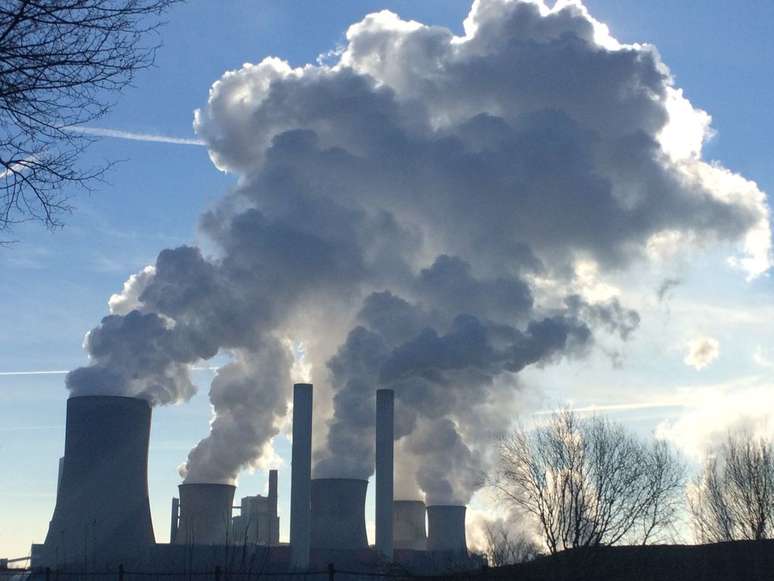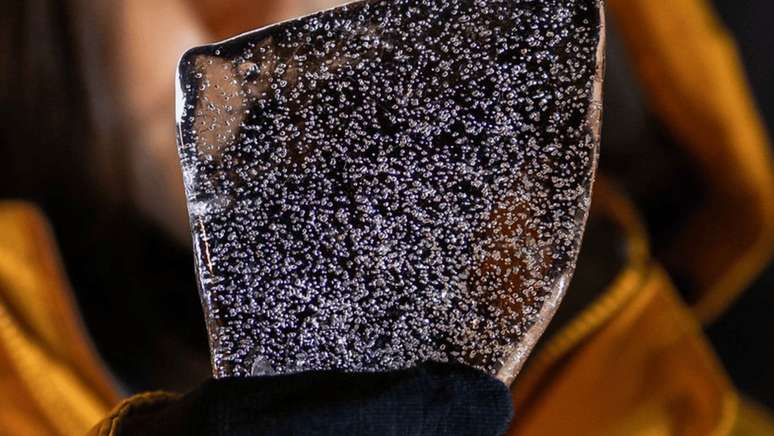Analysis of carbon dioxide in the atmosphere over the last thousands of years shows that levels of the gas are rising much more today and are expected to rise even further
Science has found plenty of evidence for this carbon dioxide levels present in the atmosphere today are unusual for any period in Earth’s history, but it is difficult to obtain historical data to put these numbers in perspective. In the context of the last millennia, would there have been a more serious period? Oregon State University research may have the answer.
- Most of the CO2 emissions since 2016 come from just 57 companies
- Global CO2 emissions reached the highest level in history in 2021
In collaboration with scientists from the University of St. Andrews and the US National Science Foundation, researchers from the institution have discovered air bubbles trapped in the permanent ice of Antarctica that contain 50,000 years of data about the atmosphere. CO2 in the atmosphere – are frozen samples from the West Antarctic ice shelf, found at 3.2 km depth.
The blocks of ice contain gases stored in small pockets of air, in which chemical analyzes have been carried out to discover the level of various substances in the Earth’s atmosphere. One of them is the CO2which according to analyzes was already present at high levels, above the norm, but far from those we are currently witnessing.

CO2 in the atmosphere of the past
Over the 50,000 studyable years, the team found that the level of carbon dioxide in the atmosphere has increased by about 14 parts per million (ppm) over 55 years, or every 7,000 years, on average. In today’s world, that same 14 ppm increase occurs approximately every five to six years – 10 times faster than at any time in the last 50,000 years.
The fluctuations of CO2 in the atmosphere coincide with cold intervals in the North Atlantic Ocean, what science calls Heinrich events, linked to sudden and significant climate changes.
According to scientists, these events are likely caused by dramatic collapses of the North American ice shelf, generating chain reactions that modify tropical monsoons and westerlies in the Southern Hemisphere.
As westerly winds become stronger and more frequent, the Southern Ocean’s ability to absorb and sequester CO2 is damaged and larger quantities of gas are released into the atmosphere. Recent climate data indicates that westerly winds are expected to become more frequent and stronger, and as CO2 generated by human activities increases, the vicious cycle of warming is expected to only get worse.
Source: Earth, atmospheric and planetary sciences, Oregon State University
Trends on Canaltech:
- DC confirms that Flashpoint destroyed an entire fan-favorite universe
- The 50 funniest Google Assistant jokes
- Samsung introduces the world’s first QD-LED screen with light-emitting pixels
- Chinese scientists discover a cure for type 2 diabetes
- The 20 best horror films of the new generation
- ChatGPT with GPT-4o is now available for free in Brazil; know how to use
Source: Terra
Rose James is a Gossipify movie and series reviewer known for her in-depth analysis and unique perspective on the latest releases. With a background in film studies, she provides engaging and informative reviews, and keeps readers up to date with industry trends and emerging talents.


![TOMORROW BELONGS TO US IN ADVANCE: THE PHILIPPINES WILL DO EVERYTHING TO PROTECT CHARLES… WHAT’S AHEAD OCTOBER 27 TO OCTOBER 31, 2025 [SPOILERS] TOMORROW BELONGS TO US IN ADVANCE: THE PHILIPPINES WILL DO EVERYTHING TO PROTECT CHARLES… WHAT’S AHEAD OCTOBER 27 TO OCTOBER 31, 2025 [SPOILERS]](https://fr.web.img6.acsta.net/img/b2/7f/b27f5a3fbc55d29b821eff36e2cd8a48.jpg)


-soq6i9m0ttgh.jpg)

